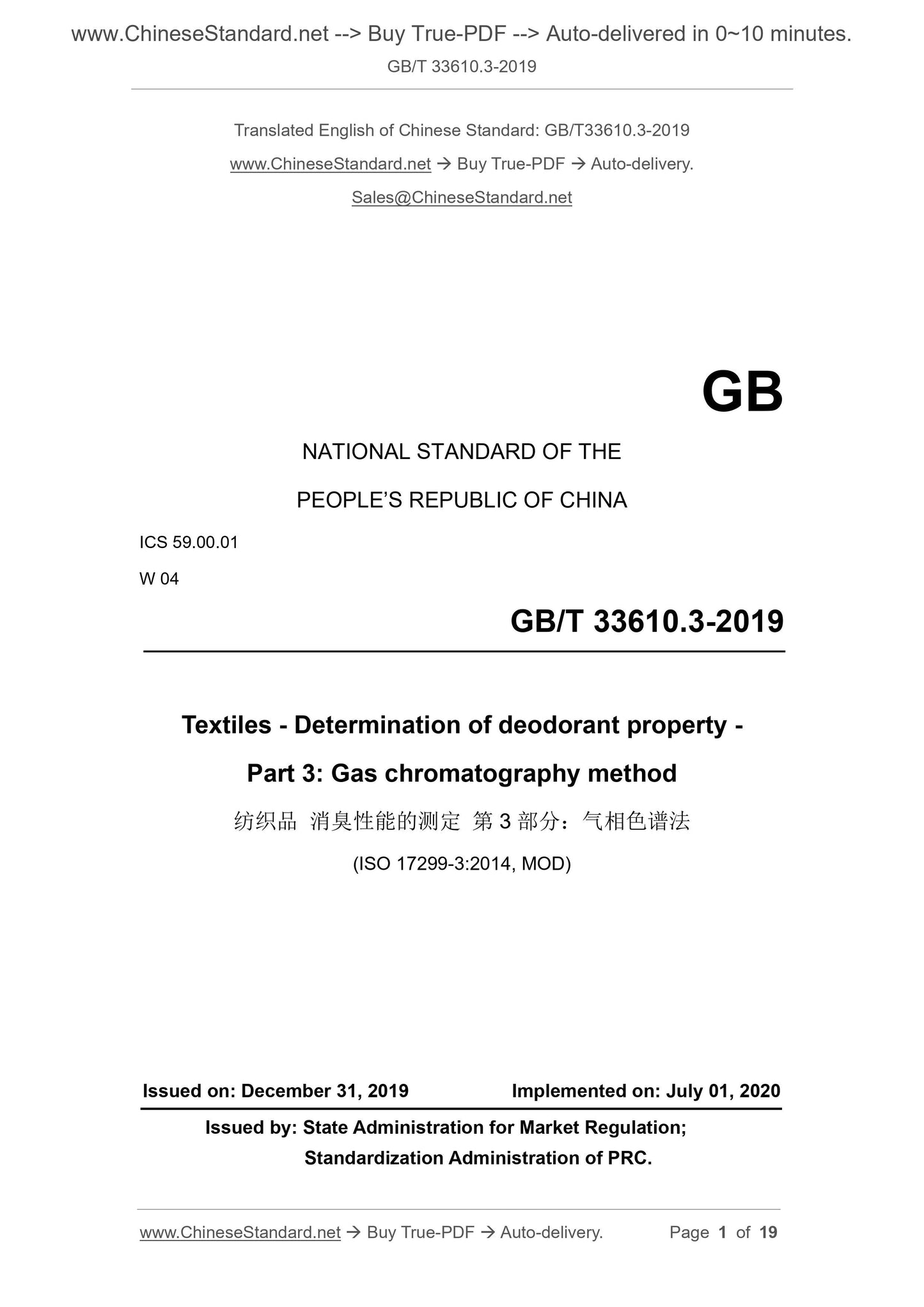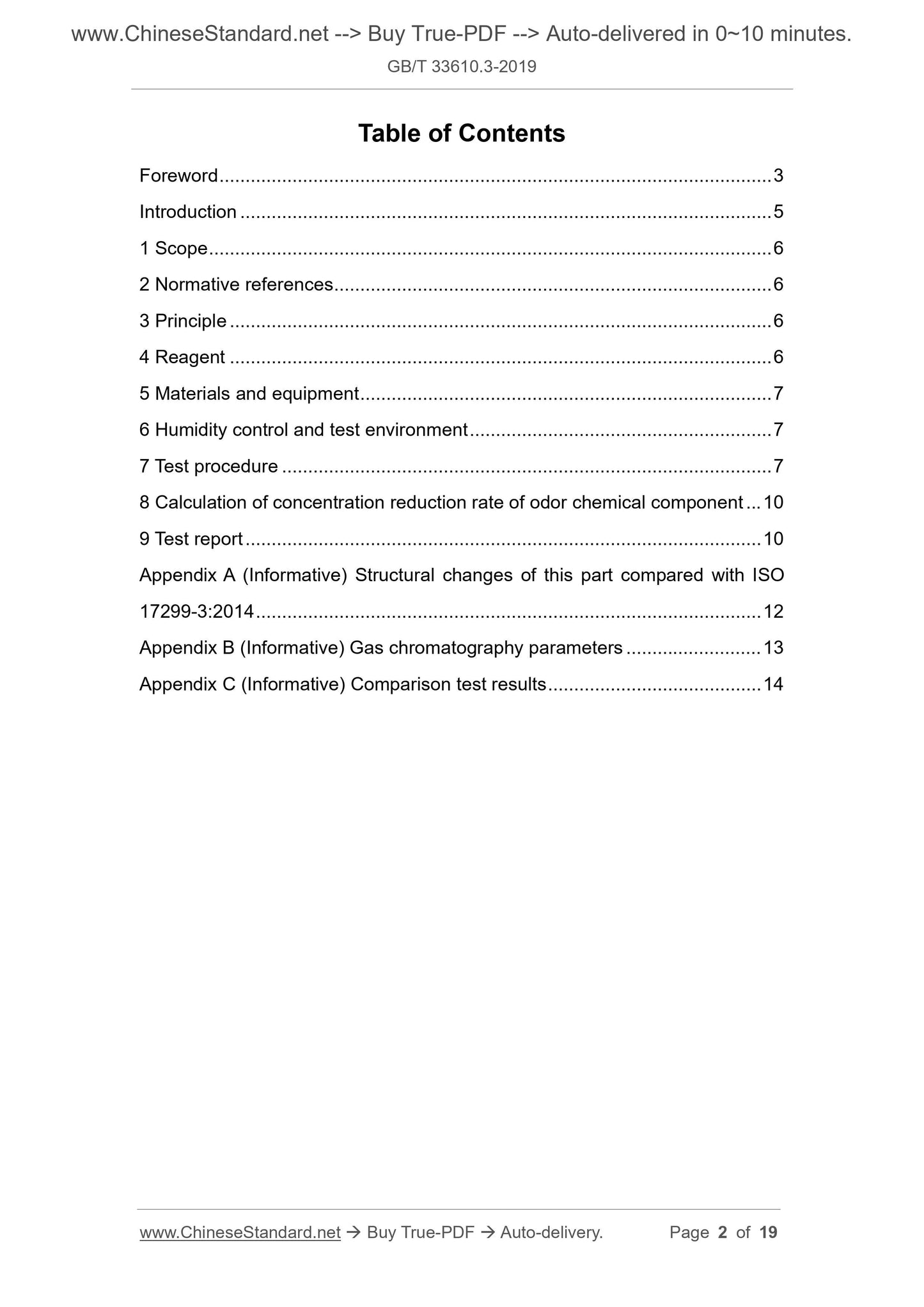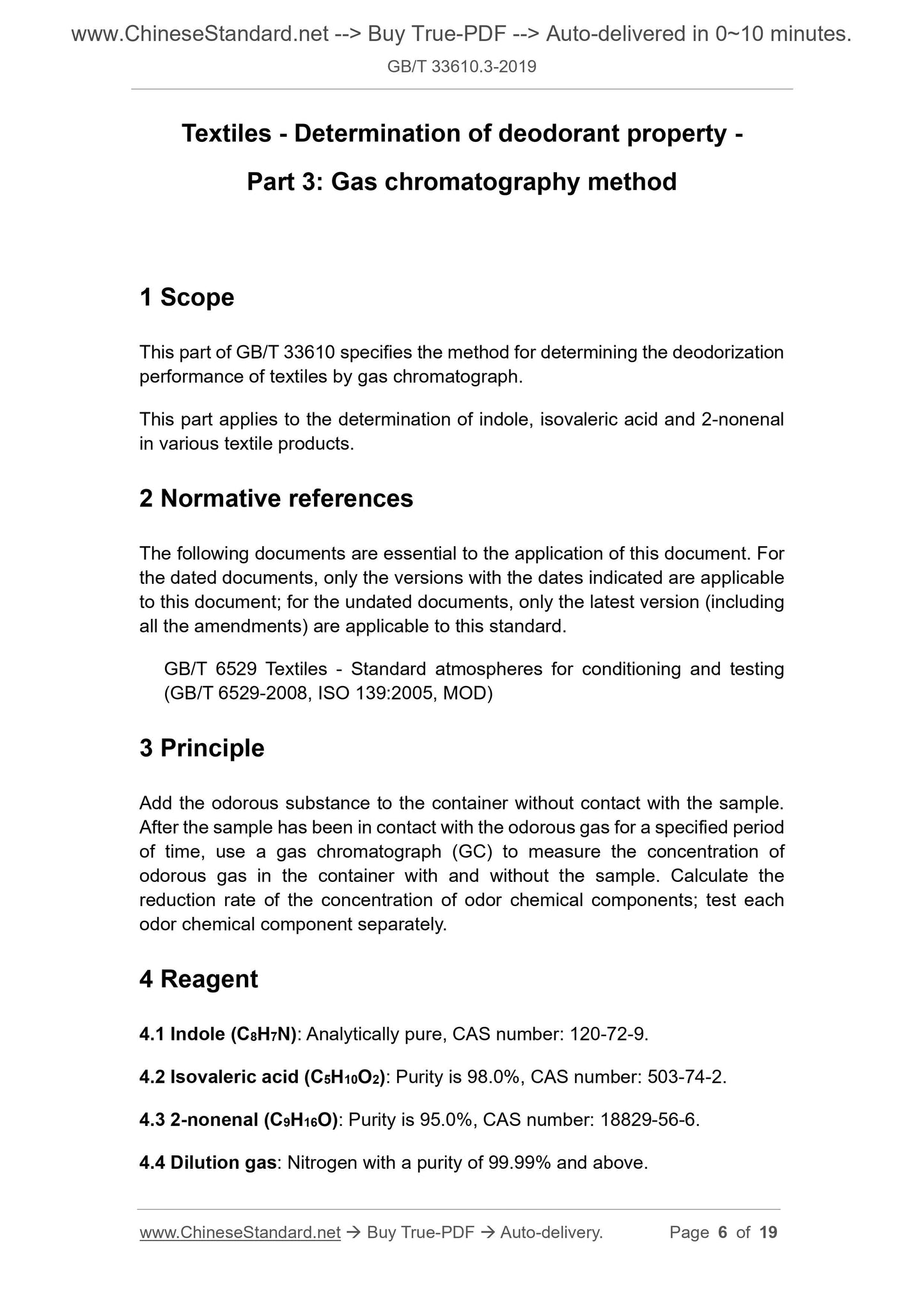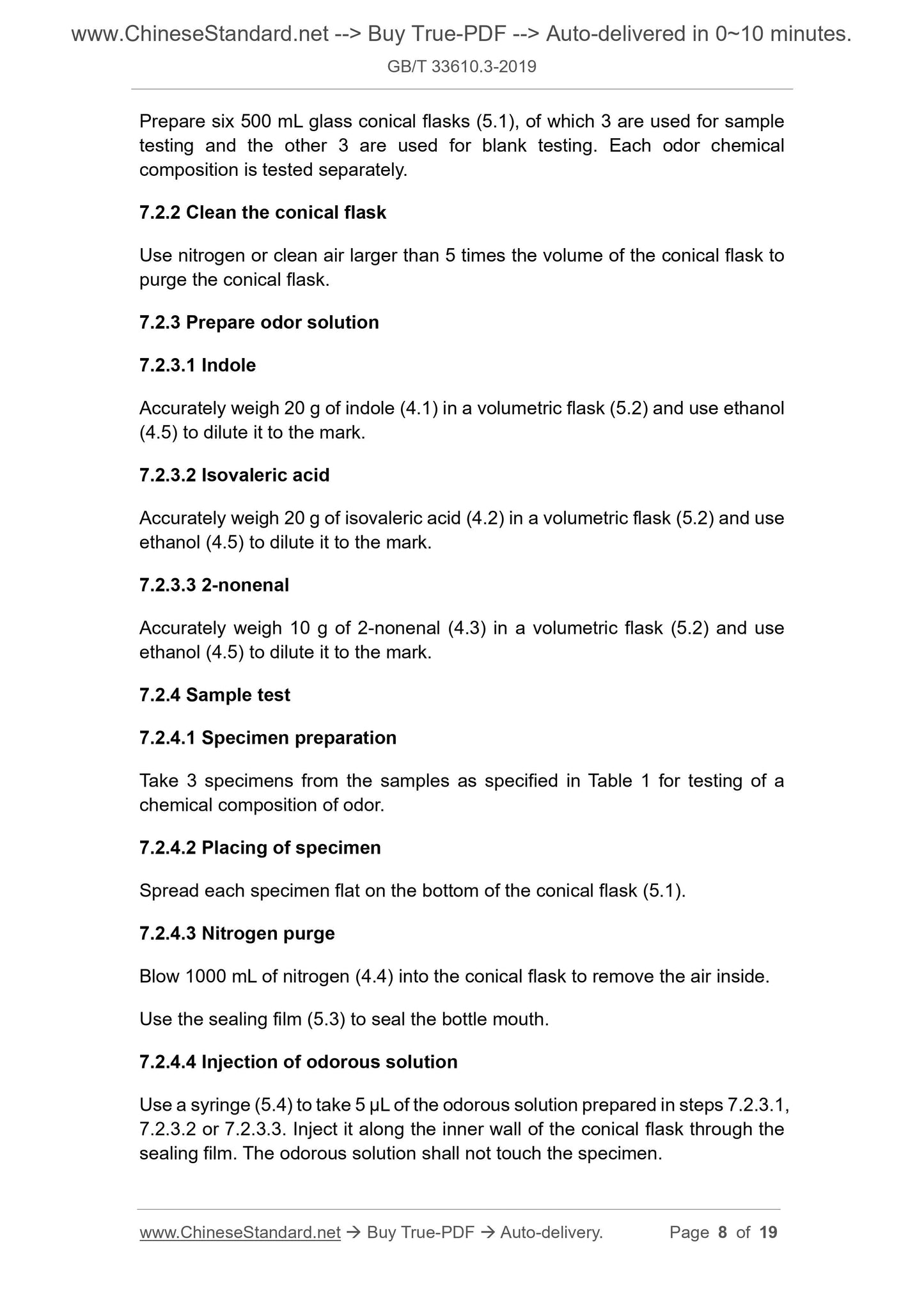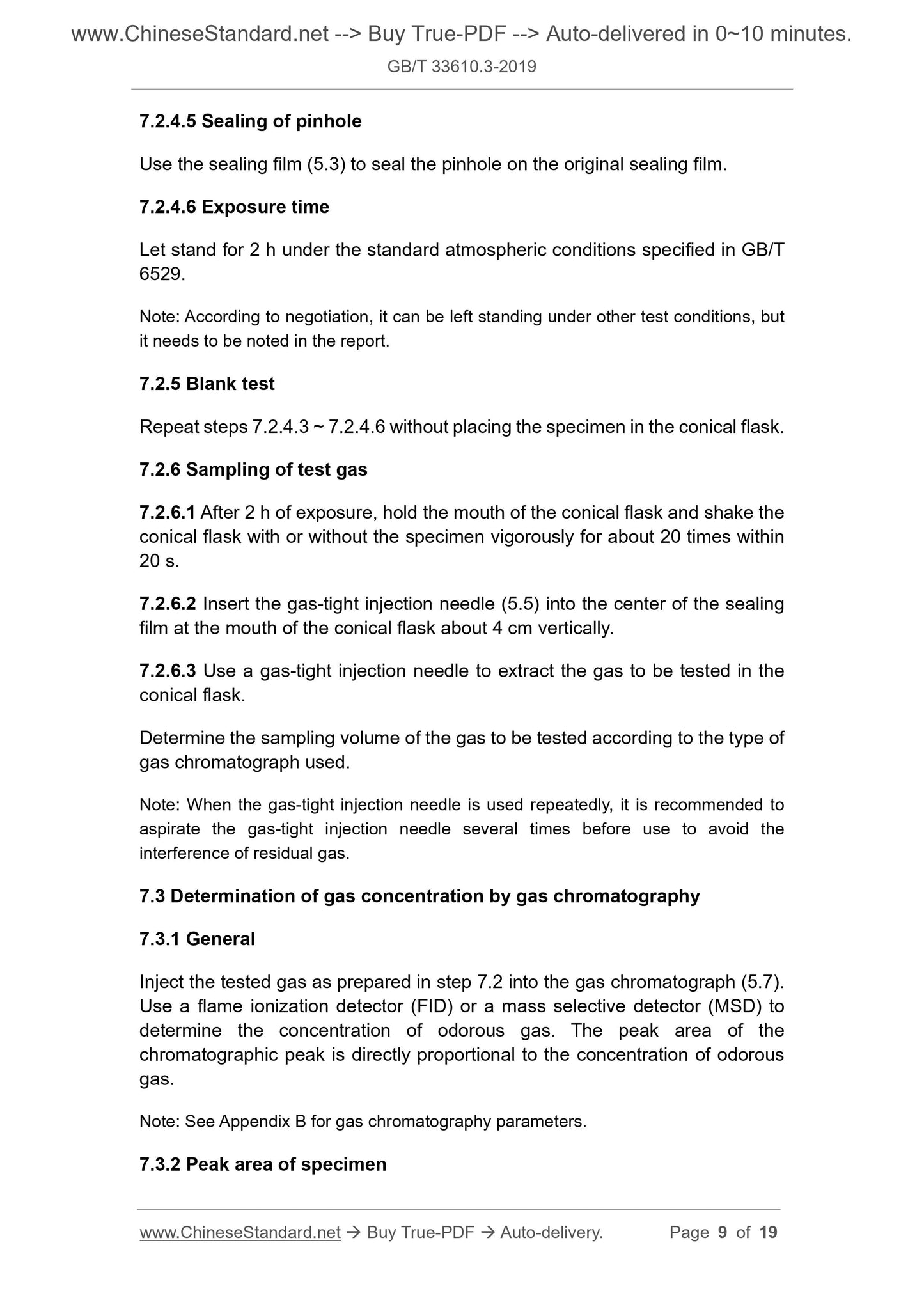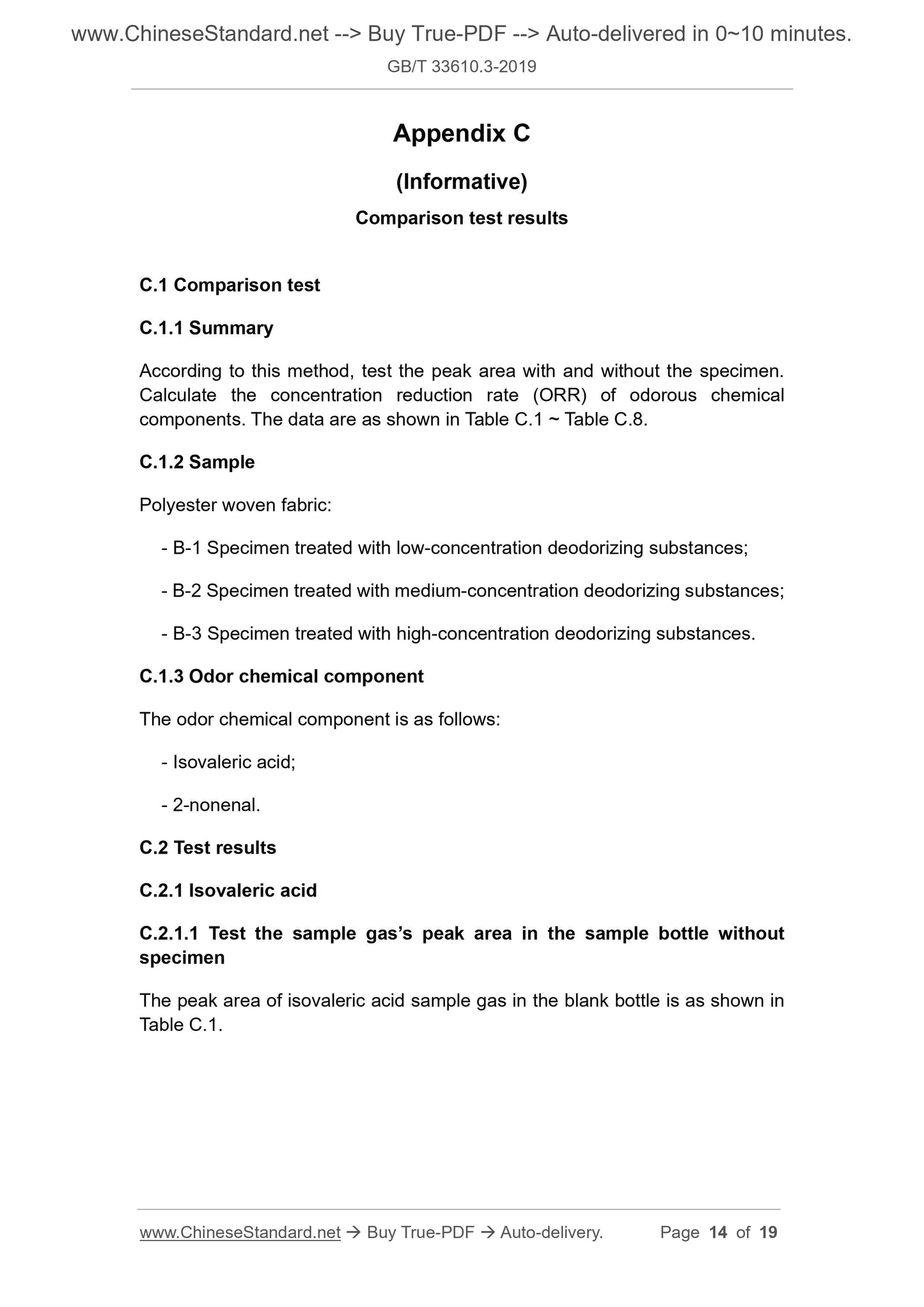1
/
of
6
www.ChineseStandard.us -- Field Test Asia Pte. Ltd.
GB/T 33610.3-2019 English PDF (GB/T33610.3-2019)
GB/T 33610.3-2019 English PDF (GB/T33610.3-2019)
Regular price
$230.00
Regular price
Sale price
$230.00
Unit price
/
per
Shipping calculated at checkout.
Couldn't load pickup availability
GB/T 33610.3-2019: Textiles -- Determination of deodorant property -- Part 3: Gas chromatography method
Delivery: 9 seconds. Download (and Email) true-PDF + Invoice.Get Quotation: Click GB/T 33610.3-2019 (Self-service in 1-minute)
Newer / historical versions: GB/T 33610.3-2019
Preview True-PDF
Scope
This part of GB/T 33610 specifies the method for determining the deodorizationperformance of textiles by gas chromatograph.
Basic Data
| Standard ID | GB/T 33610.3-2019 (GB/T33610.3-2019) |
| Description (Translated English) | Textiles -- Determination of deodorant property -- Part 3: Gas chromatography method |
| Sector / Industry | National Standard (Recommended) |
| Classification of Chinese Standard | W04 |
| Classification of International Standard | 59.080.01 |
| Word Count Estimation | 18,128 |
| Date of Issue | 2019-12-31 |
| Date of Implementation | 2020-07-01 |
| Issuing agency(ies) | State Administration for Market Regulation, China National Standardization Administration |
Share
